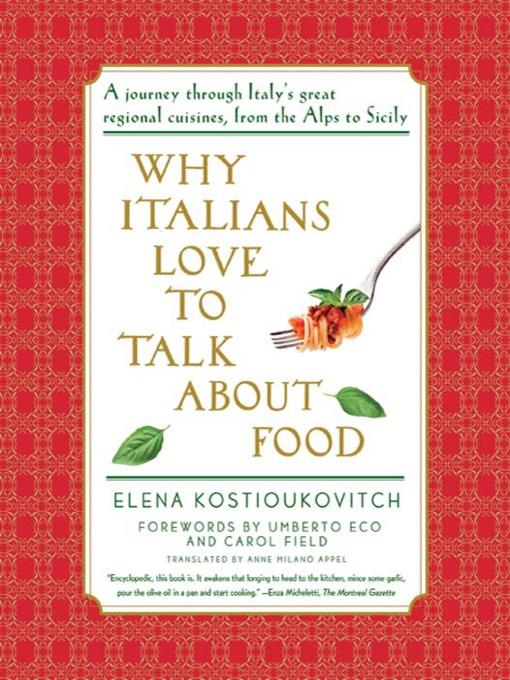
Why Italians Love to Talk About Food
کتاب های مرتبط
- اطلاعات
- نقد و بررسی
- دیدگاه کاربران
نقد و بررسی

August 10, 2009
Kostioukovitch, Umberto Eco's Russian translator, seems an unlikely source for a volume that feels like an instant Italian food and food history classic, but she's lived in Italy for 20 years and brings a nonnative's eye and taste to a fairly comprehensive gastronomical project. “Structured as an imaginary journey from region to region, north to south,” the book opens with a chapter on Friuli Venezia Giulia and proceeds down the peninsula from one region to the next. Each chapter takes a more or less similar approach, leisurely discussing the respective region in a variety of terms from history to geography and culture; sooner, as with the chapter on Puglia, or later, as with Lazio/Rome, food becomes the paramount topic. Though the book is “absolutely not about wine,” the author deftly touches on matters like the history of Campari and Frascati. Though there are no recipes, there are helpful sidebars that list dishes, products and beverages typical of each region, and in between are chapters on subjects pertinent to Italy's food and identity. Some, such as olive oil and pasta, are to be expected, while others are organized around topics like pilgrims, joy or larger themes like the impact of the Americas or totalitarianism; all are full of the sort of well-researched literary arcana and cross-cultural connections that enrich the entire book.

Starred review from September 15, 2009
A best seller in its original 2006 Italian edition and now published for the first time in English, this engrossing culinary and cultural study by a longtime Umberto Eco collaborator (Eco writes a foreword) is part travelog, part encyclopedia. Chapters alternate between exploration of each region and examination of broader aspects of the cuisines such as the contributions from the Jewish community or the role of pasta. Kostioukovitch, who hails from Russia but lives and works in Italy, traces what Italians may take for granted: the ties between food and politics, literature, geography, and more. The breadth of detail is remarkable, and though each regional chapter ends with a similarly presented listing of notable foodstuffs, the prose leads readers off in unexpected directions. Readers will appreciate how Kostioukovitch expands beyond the better-known ingredients and dishes of Italy and reveals the daily fare and special items that may seldom be experienced outside their regions or occasions. Note, however, that this is not a cookbook: Kostioukovitch richly describes dishes but offers no recipes. VERDICT For readers looking to explore culinary authenticity and origins, this is highly recommended. [See Prepub Alert, "LJ" 6/15/09; for regional recipes, see Lidia Bastianich's "Lidia Cooks from the Heart of Italy", reviewed below.Ed.]Peter Hepburn, Univ. of Illinois at Chicago Lib.
Copyright 2009 Library Journal, LLC Used with permission.

October 1, 2009
Devotees of Italian cooking will revel in the wealth of detail that Kostioukovitch has amassed about the peninsulas beloved and influential cuisine. She delves into the culinary history of each of Italys distinctive geographic regions and explains the differences among the cheeses, vegetables, oils, and wines that factor into each provinces unique palette of flavors. She broadly cites literature and poetry from classical, medieval, and modern authors, showing just how often over the course of history Italians have celebrated their varied gastronomic glories. For each region Kostioukovitch supplements her narrative with a two-page summary of typical dishes and ingredients for quick, concise reference. Two bibliographies supplement the text: one from the author inventorying works in Italian, another from the translator listing English-language books. Although no recipes as such appear, an appendix pairs the dozens of pasta shapes with sauces appropriate for each.(Reprinted with permission of Booklist, copyright 2009, American Library Association.)

























دیدگاه کاربران